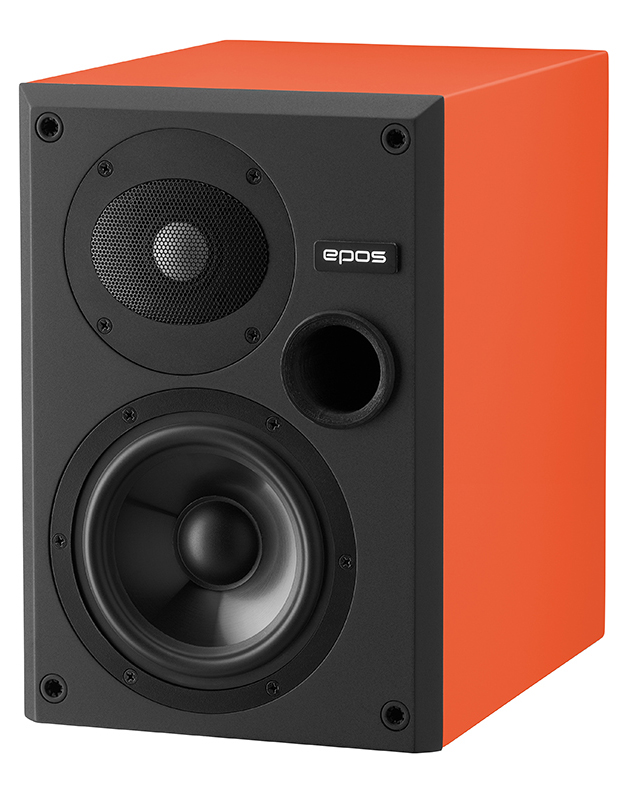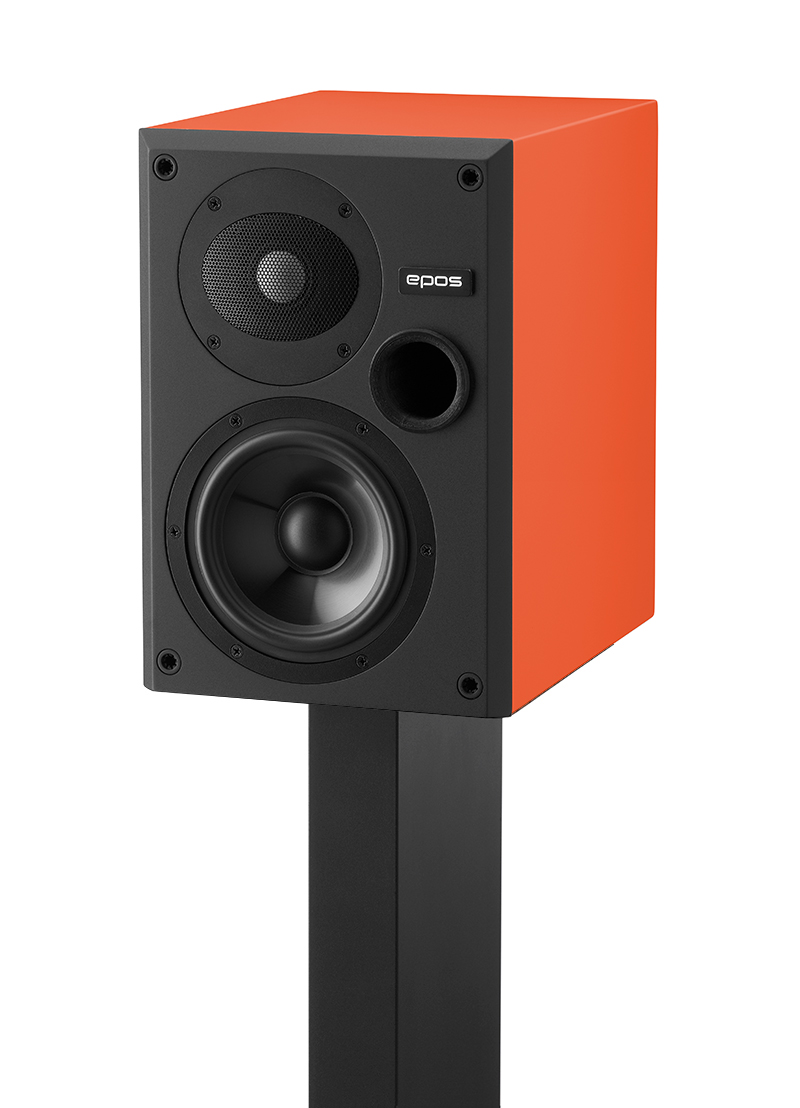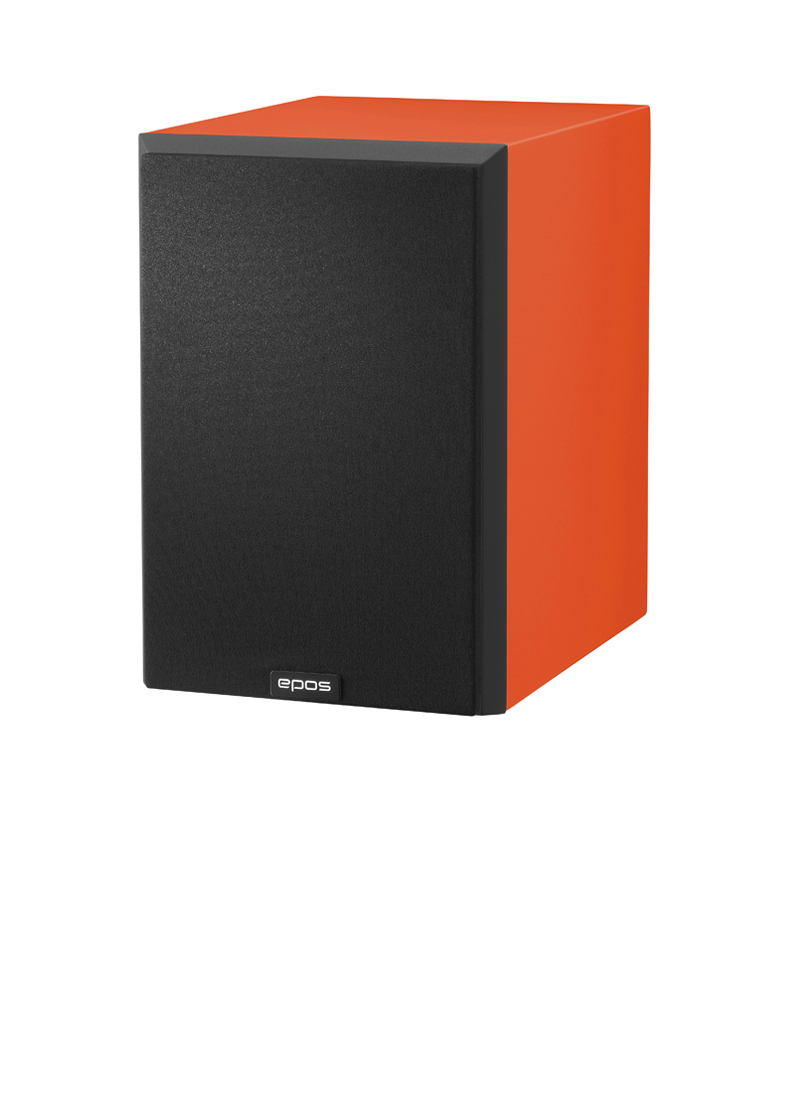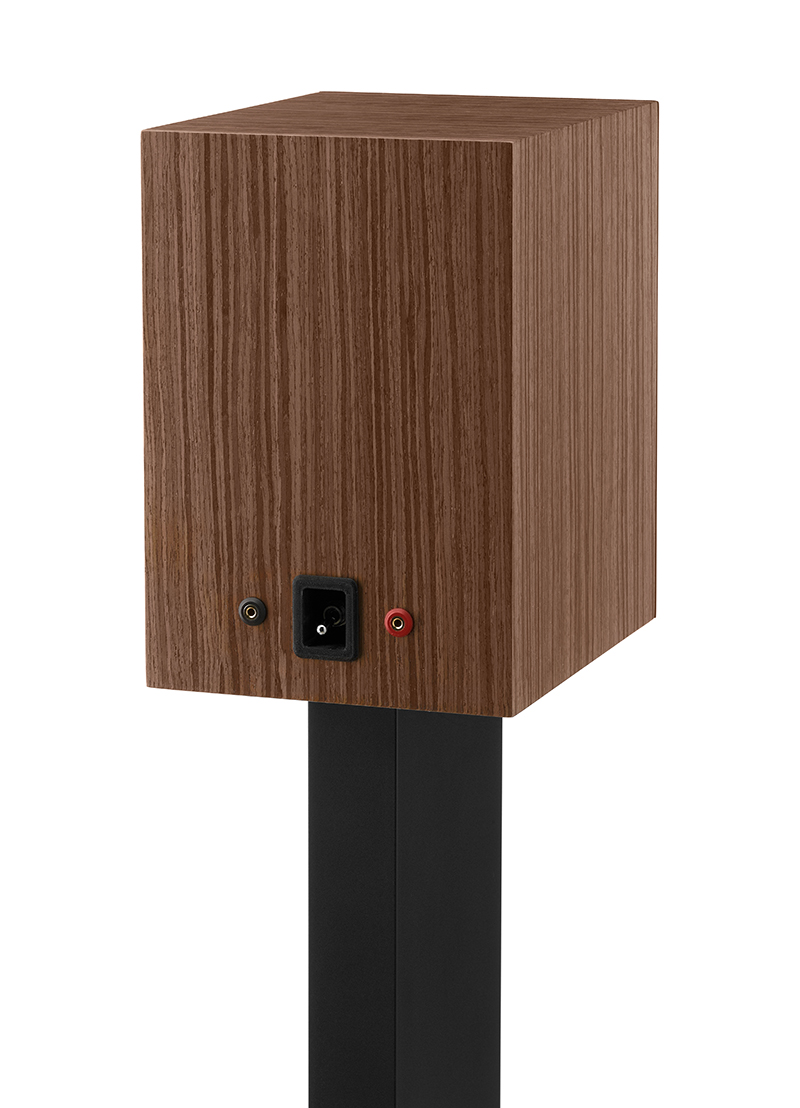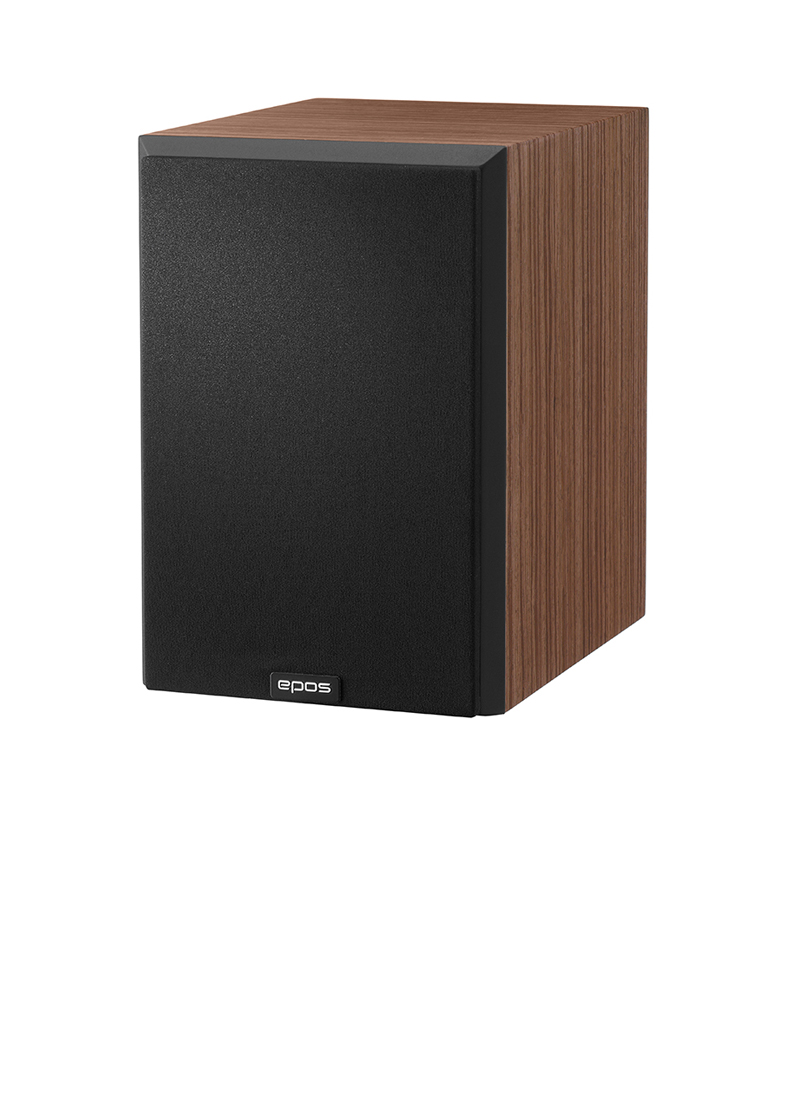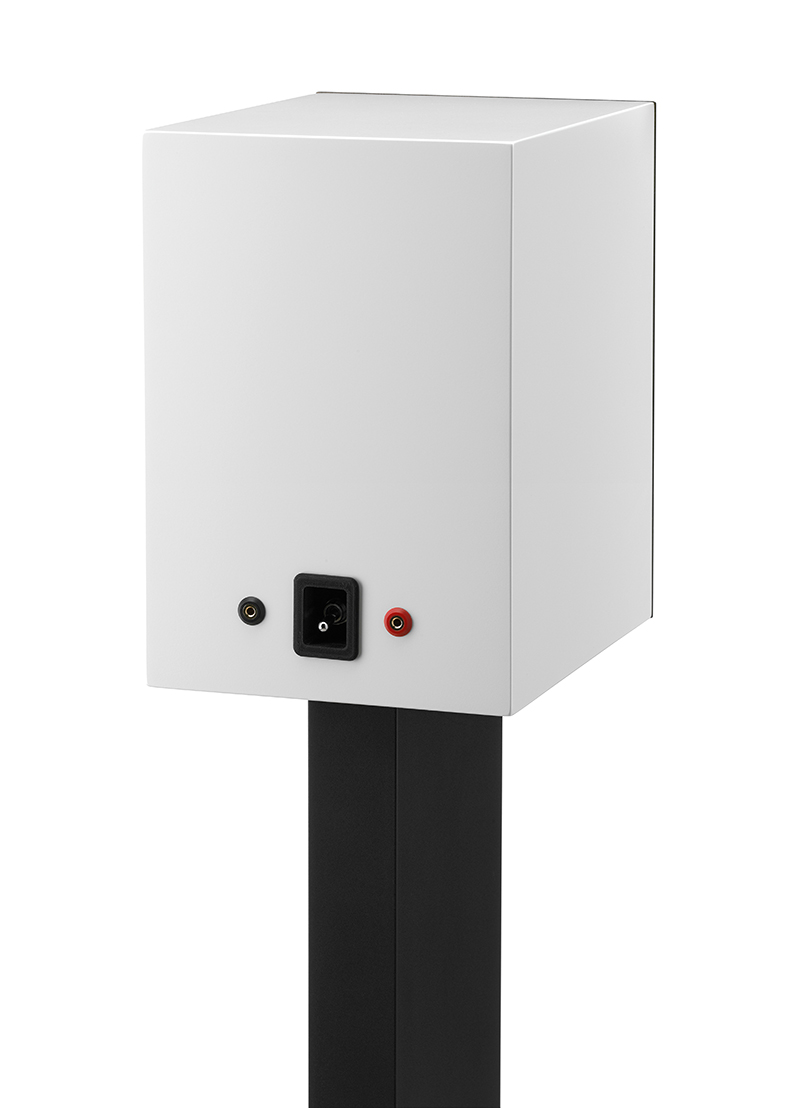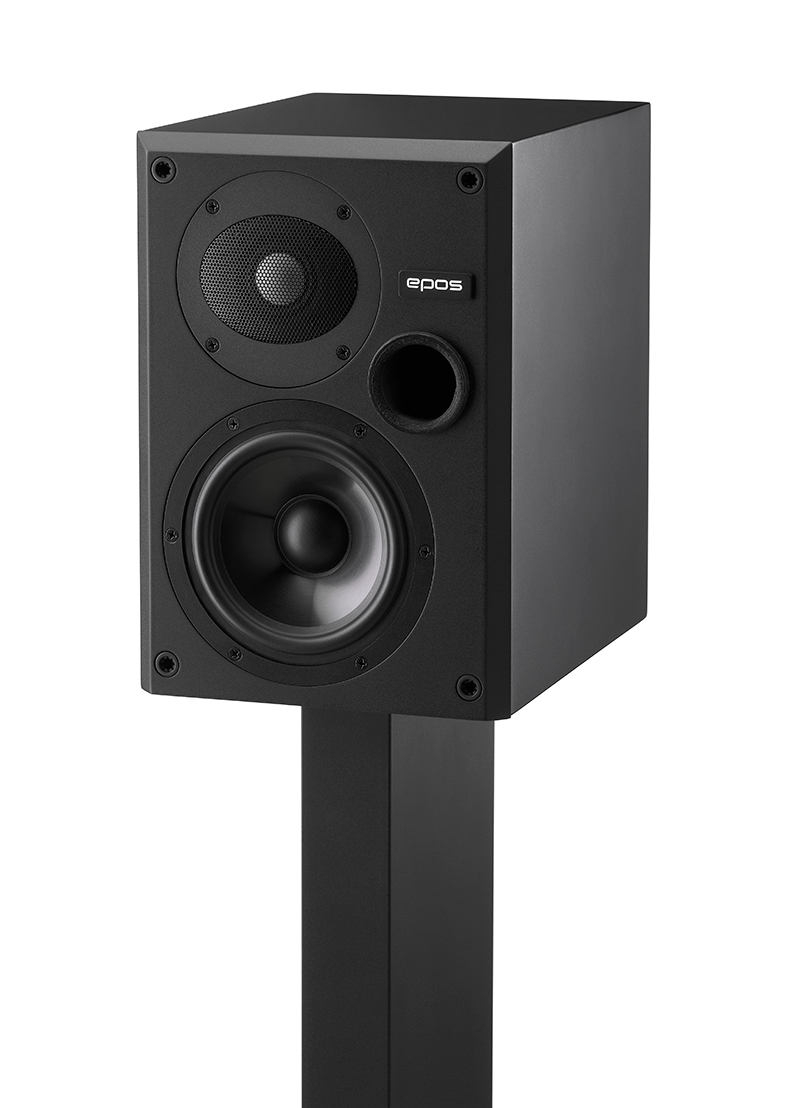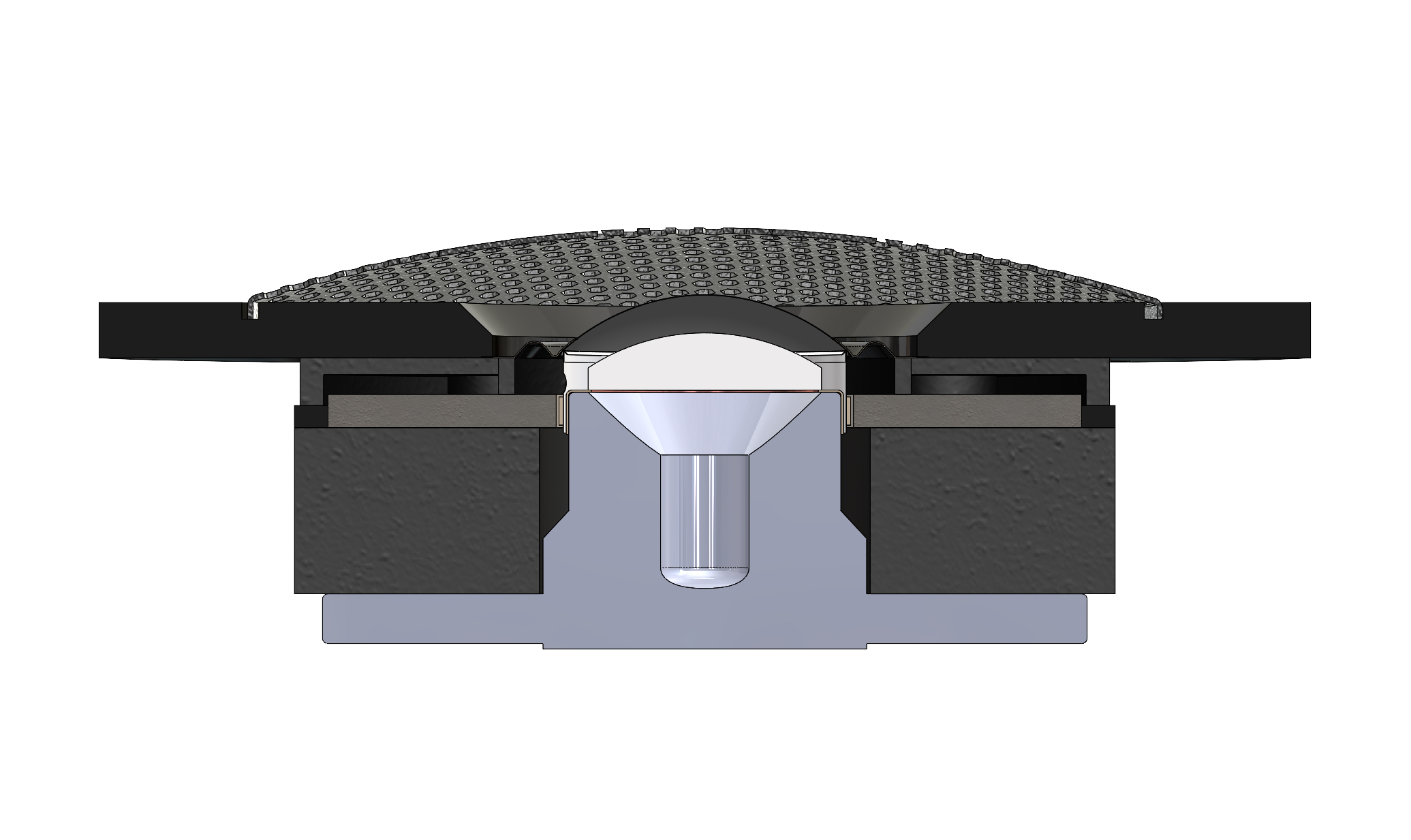NEW EPOS MODEL
ES-7N
The second model out of three.
Three models have been planned for an EPOS range:
The already available ES-14N, a larger floor stander and a smaller bookshelf speaker.
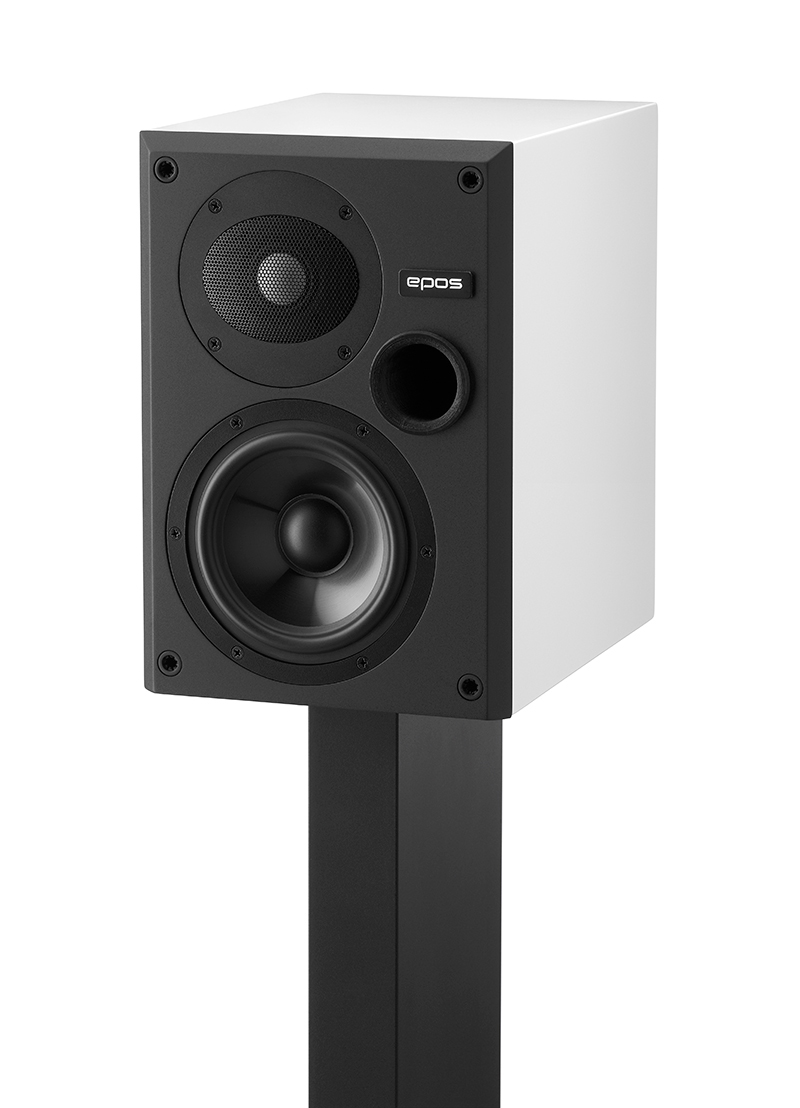
TECHNOLOGIES
Impedance:
4 Ohm, minimum 3 Ohm at 15kHz
Sensitivity:
2.83V, 1m: 86dB/89dB
Woofer:
130mm PP cone woofer
Tweeter:
28mm ceramic coated Aluminum dome
Crossover Frequency:
2.000 Hz
Dimensions:
290 x 200 x 270 mm (HWD)
Stand: recommended height
around 700 mm
Weight:
7,6 kg
Finish:
Orange semi matte, Walnut, White semi matte, Black semi matte
„Two-way reflex loaded bookshelf speaker.“
Many customers asked for a smaller speaker, so the development group created a smaller baby EPOS. This speaker should be a real bookshelf with a size small enough to go into typical IKEA designs for example. But how to make it?
Smaller speakers are especially giving the designer some severe headaches. This has something to do with the size of the front baffle and the small baffle’s influence on a speaker’s response curve. A design for free space should be different from one that plays close to a wall or inside a bookshelf.
In order to work in a semi-free space (some distance from a wall) and on a wall, the crossover filter can be changed with a switch on the backside of the speaker.
Now, you are free to choose the place of your speakers without making compromises in tonal balance.
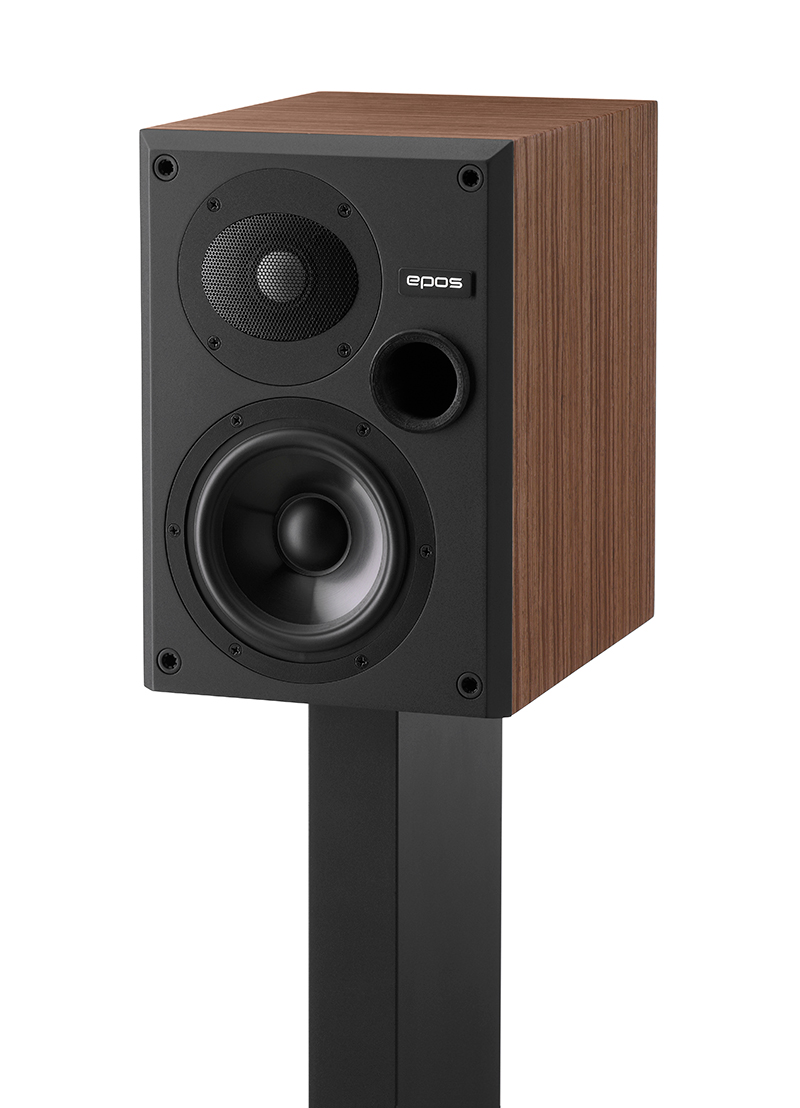
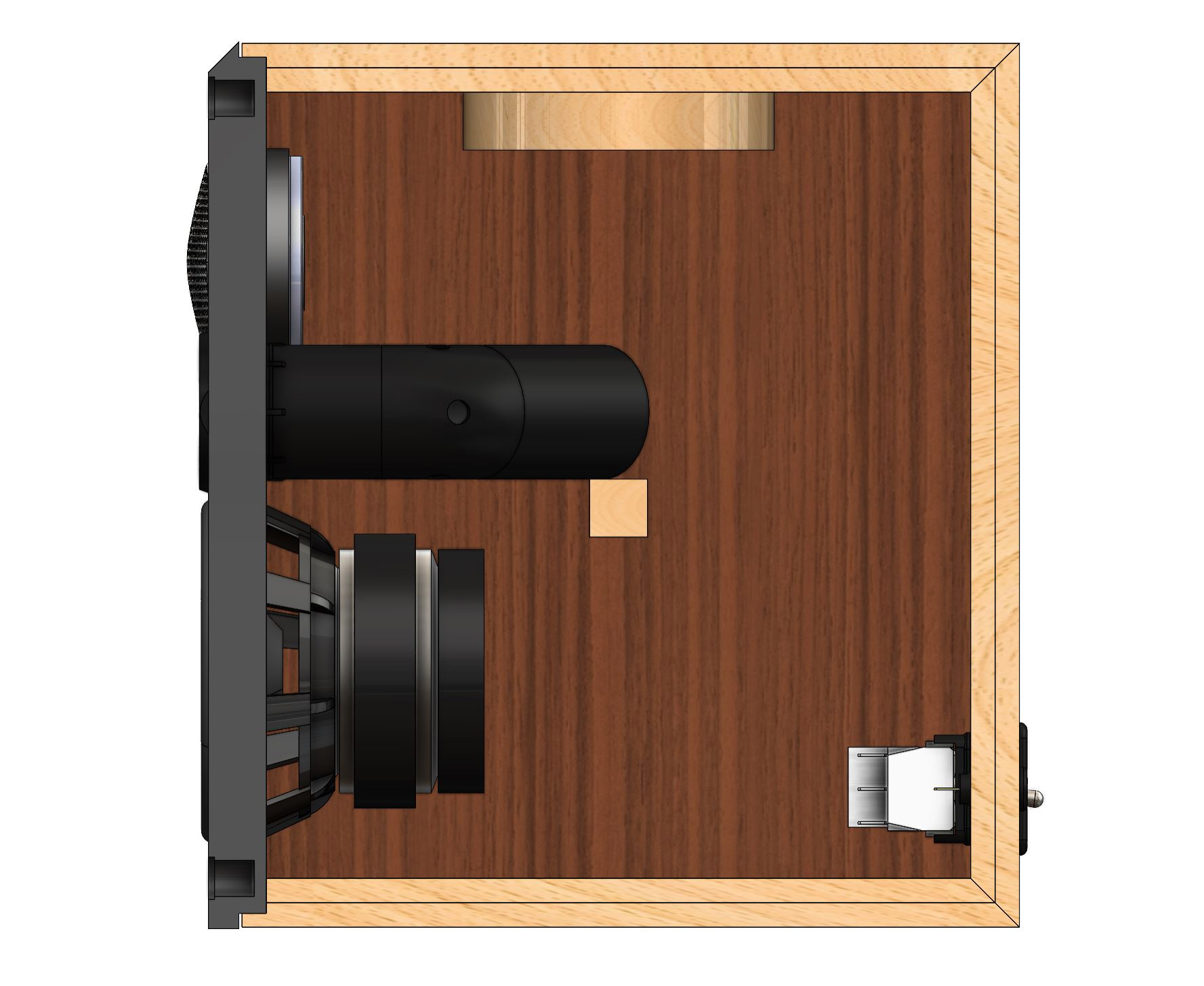
The cabinet uses 2x8mm MDF panels with a high-loss damping layer in between to control unwanted resonances of the box itself. An additional wooden block on the top helps to optimize the Stereo image. Only a single brace was necessary to make the cabinet quiet. Four inserts on the bottom take 4mm screws, and the speaker comes delivered with silicon rubber spikes for good isolation between the speaker and the ground.
The stand for EPOS ES-7N should be around 70cm high.
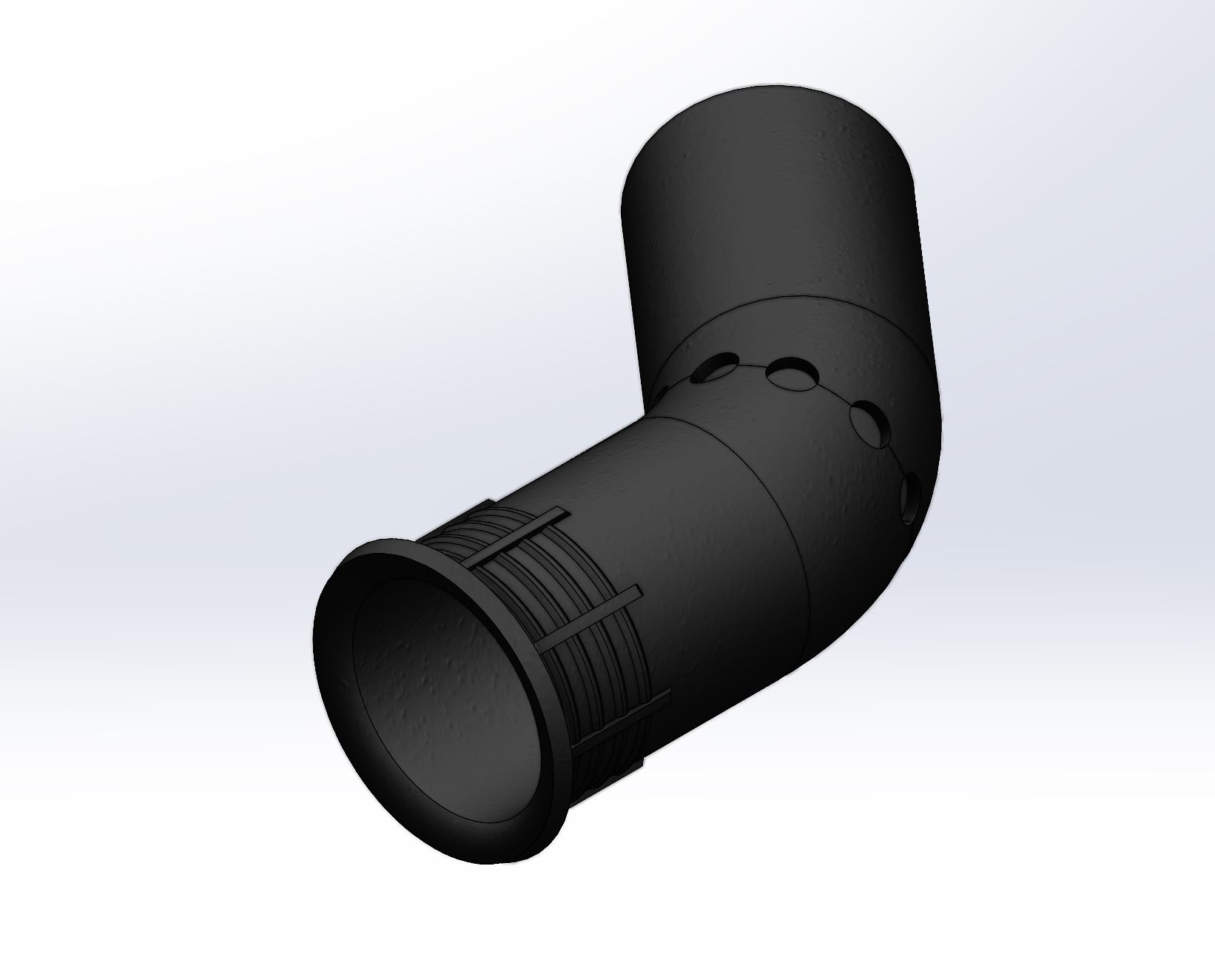
The port tube is somewhat tricky, as it sits on the side of the cabinet – not the best place if you want to minimize the tube output of the standing wave modes inside the cabinet. So, finally, the solution is a bent port that ends up in the middle between the two side panels. It features selective damped ventilation holes in the middle and so controls the output in the critical mid-band very well.
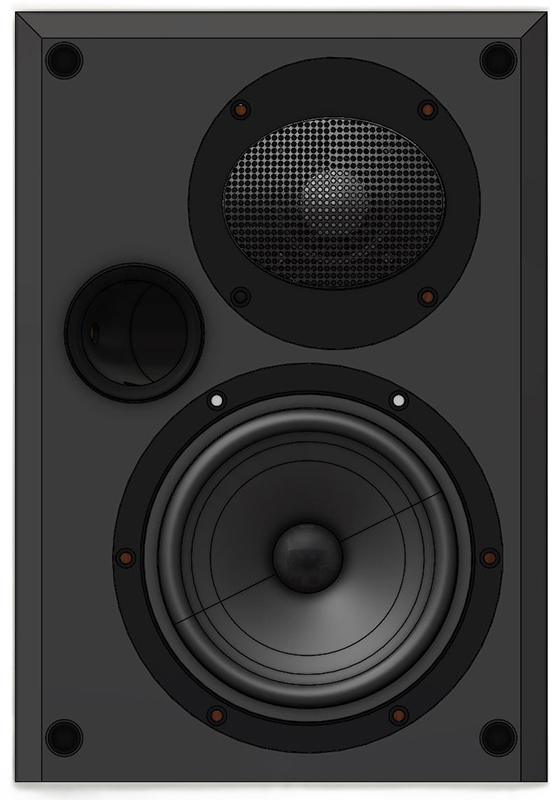
The speaker’s layout for both Stereo channels is asymmetric – please place the tweeter to the inside for best performance.


The crossover features a switch to choose between two versions of tonal balance.
With the switch in the top position, the best placement is at some distance from a wall between 30cm and 50cm.
In the bottom position, the speaker should play close to a wall or inside a bookshelf. Please try both positions to find the best result in your room.
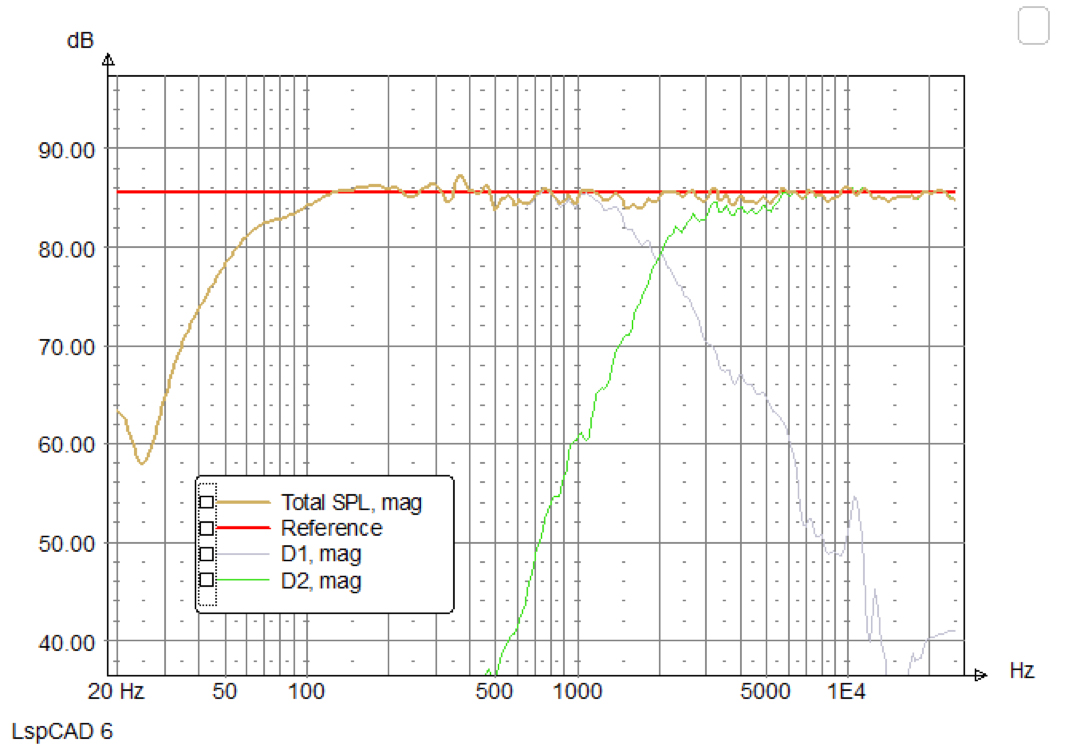
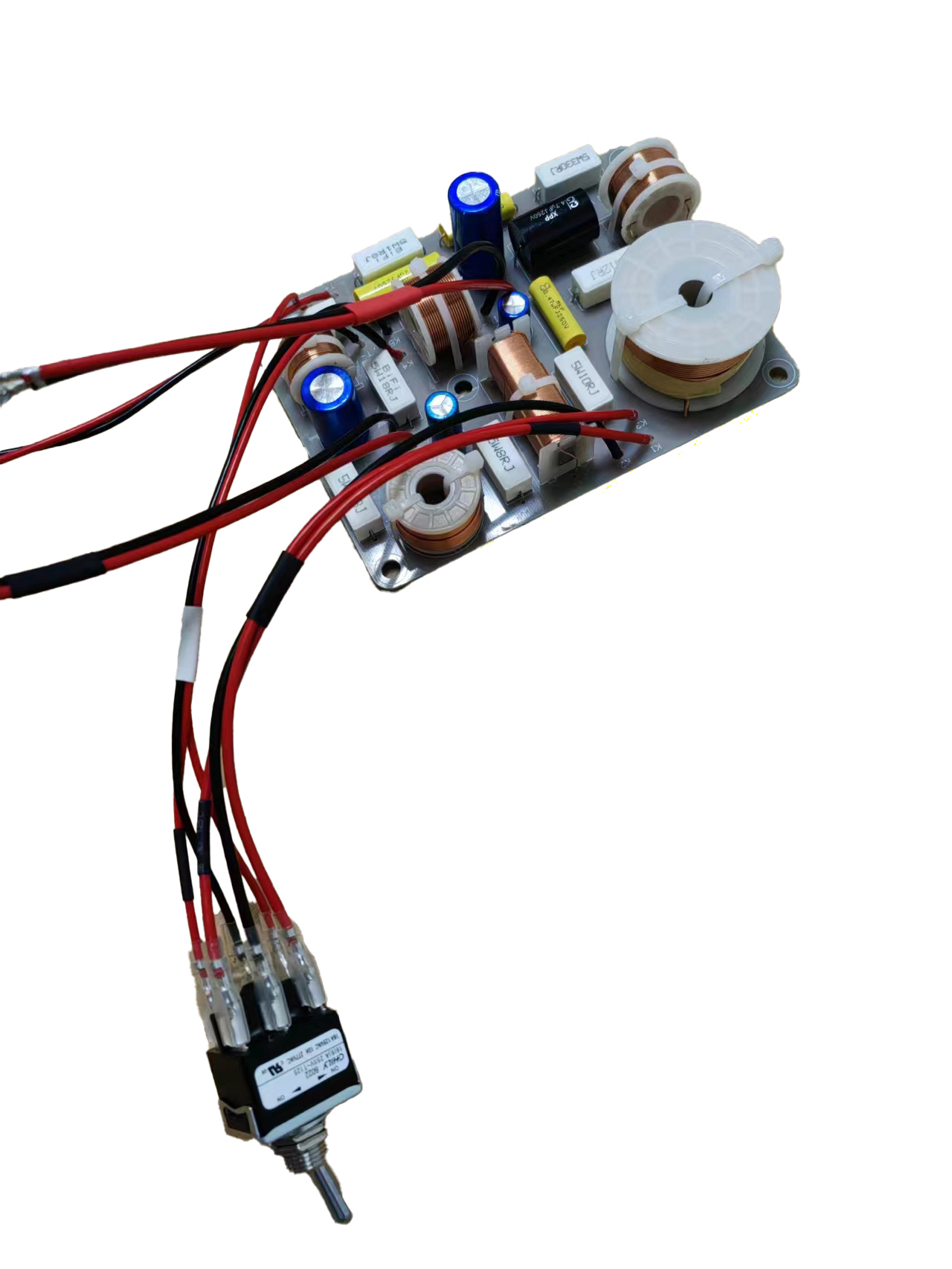
The filter itself uses a mixture of PP capacitors, Polyester capacitors and low-loss Electrolytic capacitors; almost all inductors are air cores, and the important resistors are all non-inductive custom-made versions.
Like always on EPOS speakers, all parts are finally chosen by ear.
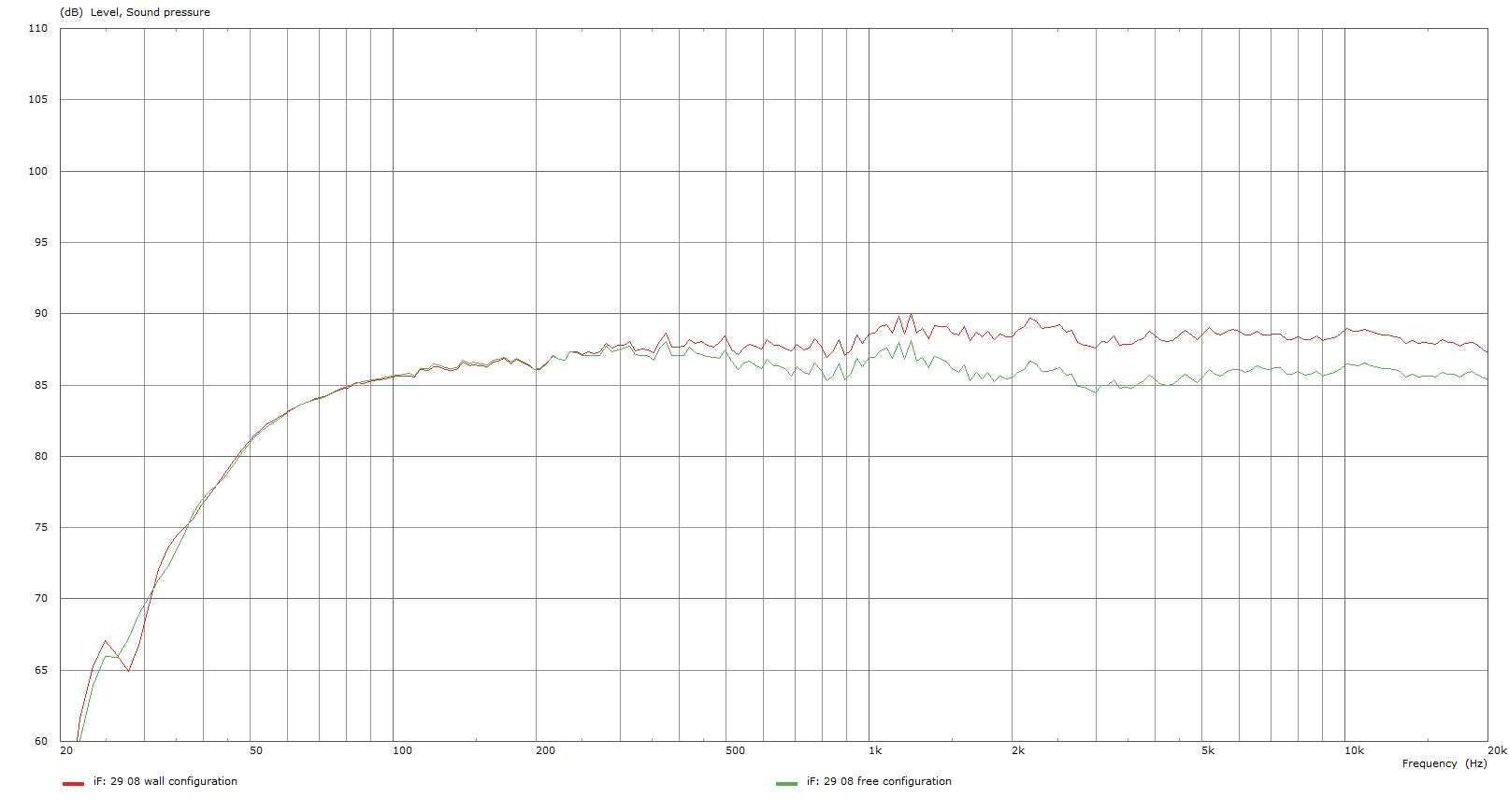
The response curve has been tailored to use the speaker in semi-free air or very near a wall.
The bottom-end roll-off is flat to deal with the room/wall gain at low frequencies and to avoid booming bass. The speaker’s sensitivity is around 86dB for Position up and 89dB for Position down of the switch.

With the constant electrical impedance of around 4 Ohm and low phase shift, ES-7N is an uncritical load for amplifiers, making it possible to use many different types.

The woofer is a new design, using – similar to ES-14N – Mica-filled polypropylene cone material made with injection moulding. A low hysteresis rubber surround and a Nomex high-temperature capable spider ensure the suspension is linear with good control of higher excursions.
The 30mm voice coil with glass fibre/Epoxy former works in a magnet system with an impedance control ring to minimize distortion and Intermodulation. A double magnet compensates the stray field and increases the force of the coil. As in any such small speaker, the crossover must be close to the driver, and the compensation magnet helps to avoid interaction with the inductors of the filter.

The tweeter of ES-7N is identical to the tweeter of the ES-14N, giving the new model the same top-end quality. It’s a 28mm voice coil on an Aluminum alloy, ceramic-coated dome with a powerful Ferrite magnet and optimised inter-cavity airflow.
The tweeter does not use Ferrofluid in the gap for stable temperature and low compression.

